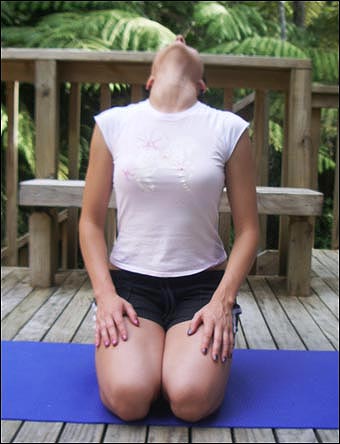Neck Stretching
Stretching is one of the most important components of any exercise regime. It is the lengthening of body muscles to increase blood circulation and oxygen supply to various parts of the body. It is not only great for athletes and sportspersons such as bodybuilders, weightlifters, power lifters, runners, football players, golfers etc. but also has a number of advantages for ordinary individuals. Stretching exercises can be performed anywhere and at any point during the day in order to de-stress the body and enhance joint flexibility. Most stretches can be performed conveniently, whether you are at your office or at home and require minimal time. For promoting the overall wellbeing of the body, you must perform 20 minutes of stretching exercises, at least 3 times a week.There are various exercises that have been developed in order to strengthen various muscle groups such as neck stretching, back stretching, leg stretching, shoulder stretching etc. Before performing any of these exercises it is essential for you to consult a registered health care practitioner in order to determine if these stretches can be performed by you or not, particularly, if you are suffering from any ailments such as back pain, neck or shoulder pain or are recovering from an injury.
It is also necessary that you take proper guidance from a certified trainer before performing any of these exercises in order to be able to apply the right techniques. Performing these exercises in the wrong manner increases the risk of injury and you may not benefit from them at all. If you are following any video, you must watch each demonstration carefully prior to performing them all by yourself.
Neck Stretching and you:
The neck and shoulder muscles work persistently and are subjected to a lot of strain, particularly, if you have to spend endless hours at your desk or in front of a computer. It is essential to increase the body’s flexibility and release tension. Stretching exercises reduce neck stiffness and muscular fatigue. They also promote good posture and balance. However, it is essential to understand that the neck is a very sensitive part of the body; therefore you must perform neck stretches with great care and avoid overstretching and bouncing or jerking while stretching.
Neck Exercises:
Head forward stretch: This stretch helps enhance the flexibility of your body and maintains the mobility of the joints. It helps promote maximum range of motion of the neck and back muscles. Sit straight on a chair and place both palms on the forehead. Apply pressure towards the palms while keeping them stationary. You will feel the stretch in the neck. Hold for 12 to 15 seconds and release.
Shoulder Stretch: This is one of the best ways by means of which you can exercise your deltoids. Stress builds tension in the muscles which can be relieved through stretching exercises. Muscular tension can cause headache, stiff neck, muscular soreness and a stiff back. Stand up straight with your shoulders and back absolutely relaxed. Hold your hands behind your lower back and try lifting them in this position. Make sure that your elbows are absolutely straight. Your hands must move backwards from your body. Hold the stretch for 12 to 15 seconds and then release.
Anterior Deltoid Stretch: This is an excellent way to exercise the front part of your shoulders. The anterior deltoid enables you to raise your arms to the front and the lateral deltoid helps you in raising them to the sides. Stand absolutely straight with your feet hip width apart. Holding by the wrist, take your right arm behind you and gently ease it behind the back. The stretch should be felt at the front of your shoulder. Hold the stretch for 12 to 15 seconds and release.



